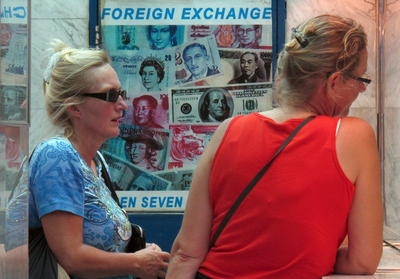Since most of the intervening economies – China, Korea, and recently Japan – are in East Asia, it would be more effective to try to forge consensus on exchange rate policy among East Asian countries, which could be then presented to the G20. Several arguments suggest such an approach.
Firstly, China’s exchange rate policy has an enormous effect on the exchange rate policy of other East Asian countries. Unless the yuan is allowed to appreciate, others will feel compelled to continue intervention to maintain relative competitiveness vis-à-vis China and each other. And although China has a genuine interest in reducing dependency on the dollar, it fears that an appreciation of the yuan against the dollar would badly affect its exports and hurt domestic growth and employment. We have what game theorists would call a Nash equilibrium problem. A coordinated, joint appreciation of East Asian currencies would make life easier for Chinese exporters compared to the case of a unilateral appreciation, since relative competitiveness would remain unchanged between East Asian countries.
Second, China’s current account surplus has also been linked to the development of an extensive regional trade-production network which has made use of a division of labour across East Asian economies. A regional production and trade pattern has emerged – parts and components are shipped from other East Asian economies to China where they are processed and assembled, before the final goods are exported to the market of final demand, often the US and Europe. About 70 per cent of Chinese imports from emerging East and Southeast Asia are parts and components[S1] . China’s bilateral trade surplus vis-à-vis the US and Europe, respectively, is a consequence of a distinct mode of production across East Asia, with China absorbing exports from other East Asian countries before they are exported after relatively little value has been added. Therefore, part of China’s exports to the US and Europe can be characterised as ‘regional’ exports from East Asia, rather than solely Chinese exports. Given that China has been running a trade deficit with the East Asian region as a whole, it makes sense to include the region in solving the problem of global imbalances.
Third, a major reason why basically all East Asian countries – with the exception of Japan – have either pegged their currencies to the dollar or otherwise closely managed the dollar exchange rate is that the common link to an external anchor has provided the region with relative intra-regional exchange rate stability. Given the tight integration of East Asian economies in terms of trade and investment, this relative intra-regional exchange rate stability is an important regional public good. Arguably, the regional trade-production networks mentioned earlier would not have been able to develop in the face of volatile exchange rates. Safeguarding relative intra-regional exchange rate stability, while at the same time allowing for more flexibility vis-à-vis non-regional currencies like the dollar and the euro, should be the central aim of East Asian countries’ exchange rate policies. China would therefore be wise to seek a cooperative approach to exchange rate management with its regional neighbours.
Before the G20 summit in Seoul, China should invite its East Asian peers to Beijing and discuss a cooperative stance on exchange rate policy to help correct the imbalances that apparently exist between the East Asian region and the US as well as Europe. In the decade since the Asian financial crisis, China, Japan, Korea and the 10 members of ASEAN have already been working together to establish a regional financing facility for the provision of liquidity finance in times of crisis and various regional initiatives to foster the development of local currency bond markets. They should expand cooperation to the field of exchange rate management. Twenty-five years after the Plaza Accord, the time is ripe for a Beijing Accord.
Ulrich Volz is a Senior Economist at the German Development Institute/Deutsches Institute für Entwicklungspolitik (DIE). He is author of ‘Prospects for Monetary Cooperation and Integration in East Asia’ (MIT Press, May 2010).


While the dominant view on exchange rates in economic theories is the flexible regime, the regime has a fundamental weakness in terms of inconsistency with the macroeconomic objective of price stability.
On the other hand, the fixed exchange regime in terms of one currency only like the $US has also its weakness when the $US is flexible with other main international currencies. It is moving with the $US against other currencies.
An alternative is to anchor a currency onto a basket of main international currencies.
The best is with the the weights determined by the a country’s trade shares with those countries.
An alternative is to have an internationally recognised one, so that countries wish to anchor their currencies can do so.
Another step in the alternative approach is to have a framework of adjustment mechanism if and when large international imbalances involving a country where its currency is anchored with those main currencies occur.